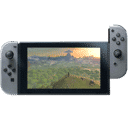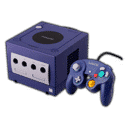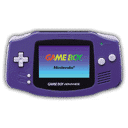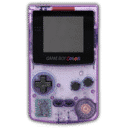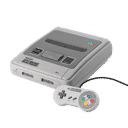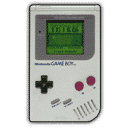
Summary:
Rayman has momentum again. Ubisoft used the series’ 30th anniversary to confirm that dedicated teams at Ubisoft Montpellier and Ubisoft Milan are building the “future of Rayman,” while job listings flagged a prestigious AAA production attached to the brand. Around Paris Games Week, community-circulated clips and coverage pointed to more than one project under Ubisoft’s umbrella, suggesting a broader plan than a single release. That could include a modern flagship, anniversary-focused initiatives, and licensing beats that reintroduce Rayman to new audiences. Here, we unpack what’s official, what’s strongly indicated, and where caution is still smart. We pull together the hiring signals, video statements, and licensing deals to sketch the most likely shape of Rayman’s return—gameplay direction, platform expectations, timing windows, and how Ubisoft may stage reveals to keep excitement building. If you’ve been waiting since Legends for a true follow-up, the pieces now on the board feel like the clearest path to a comeback in years.
Rayman at 30: why Ubisoft chose now to go public
Anniversaries create permission to speak, and Ubisoft used Rayman’s 30th to reset expectations. After years of silence, the company acknowledged that a talented team is actively shaping the franchise’s future, giving fans a concrete reason to lean back in. That timing matters: it lets Ubisoft tie nostalgia to forward momentum, while also buying space by tempering near-term hype with a reminder not to expect news “too soon.” The move signals a long-game approach. Instead of rushing a reveal, Ubisoft is stitching together hiring, light public messaging, and anniversary programming to prime the pump. For a platformer with deep goodwill, this slow-burn strategy invites speculation without overcommitting, keeping optionality around scope, art direction, and tech decisions across platforms.
From whispers to signals: multiple Rayman projects emerge
Fans picked up new signals during Paris Games Week when interview chatter indicated Ubisoft had more than one Rayman effort in the works. That framing shifts the conversation from a single comeback to a portfolio play. In practical terms, that could mean an anchor AAA experience alongside one or more adjacent projects—think an anniversary-driven initiative, a remake to reacquaint players with the core fantasy, or even experimental pieces designed to test new mechanics. A multi-track plan spreads risk, widens audience reach, and gives Ubisoft more levers to sustain interest between milestones. It also mirrors how other long-running series are revived: lead with a credible tentpole while surrounding it with smaller moments that keep the brand visible, shareable, and conversation-worthy.
Hiring receipts: the AAA thread that ties it together
Job listings often reveal ambition before trailers do, and Ubisoft Milan’s postings for roles tied to a “prestigious AAA title for the Rayman brand” speak volumes. AAA scope isn’t just a label; it implies a level of team size, production values, and timeline that fits a flagship rather than a side project. Pair that with statements that Montpellier and Milan are collaborating on Rayman’s future, and you have a believable structure: creative leadership in Montpellier—home to key Rayman heritage—supported by Milan’s proven execution chops. This combined footprint suggests a project built to stand alongside big platformers on modern hardware, with animation-first gameplay, responsive feel, and a polished presentation that respects the character’s hand-drawn spirit.
Official statements: careful words with clear intent
Public language around Rayman’s future has been deliberately measured. Acknowledging active development while advising patience signals that internal milestones exist but aren’t yet locked enough for a public roadmap. That caution is healthy. It reduces the risk of date slippage headlines and gives teams the breathing room to iterate. The upside for fans is clarity that work is real, not rumor. The downside is waiting without screenshots or a teaser. Still, the mix of hiring proof, anniversary messaging, and licensing expansion plants enough flags to treat Rayman’s return as an active initiative rather than wishful thinking. The next external beat will likely hinge on production confidence: expect a cinematic teaser or developer message once pillars—movement, combat, art treatment—are finalized.
Why “more than one project” makes strategic sense
A single tentpole can relaunch a brand, but a cluster of projects builds resilience. A remake or remaster can reacquaint lapsed players and onboard a new generation with modern conveniences. A fresh AAA entry can push the series forward with new moves, co-op ideas, or layered level design that rewards mastery. Meanwhile, peripheral initiatives—licensing deals, community campaigns, or platform partnerships—can widen reach and create a steady drumbeat. This diversified approach lets Ubisoft hedge around timing: if the AAA window moves, a remake or anniversary piece can land first, preserving momentum. It also supports different price points and formats, giving fans flexible ways to reengage with Rayman’s world without waiting for one big day.
The remake question: a bridge to the future or a detour?
Remakes are more than nostalgia; they’re onboarding tools. For Rayman, revisiting early adventures with modern fidelity could reacquaint players with the series’ identity—fluid movement, whimsical danger, and painterly charm—while setting expectations for where gameplay goes next. If Ubisoft pursues a remake alongside a new flagship, sequencing becomes key: launch the remake to rebuild familiarity and convert curiosity into wishlists, then follow with the fresh entry once core mechanics have been polished and tested. The risk is saturation if timelines overlap poorly. The reward is continuity: a steady arc from celebration to reinvention that keeps Rayman in the conversation through trailers, demos, and hands-on moments across a full year or more.
What a modern Rayman should feel like today
Rayman thrives when movement is joyous and readable. A 2020s take should double down on responsiveness—snappy acceleration, generous air control, and tight hitboxes—while using animation not just for style but for gameplay clarity. Layered level design can serve both casual and expert audiences: branching paths for discovery, time-trial lines for speedrunners, and cooperative routes that encourage playful teamwork. Accessibility matters too: colorblind-safe cues, remappable inputs, assist toggles for timing windows, and optional hinting. The soundtrack should bounce between playful and propulsive, with dynamic layers keyed to momentum. Above all, the game should invite flow—levels that can be learned, mastered, and then danced through, making replays feel like performance.
Platforms and performance: sensible targets and priorities
Assuming a cross-platform launch, the smart baseline is 60 fps with crisp animation and minimal input latency. Fidelity can scale, but the feel must not. On handheld-friendly hardware, maintaining frame pacing is more important than maximal effects; on high-end machines, higher resolution and richer post-processing can enhance depth without muddying silhouettes. Quick loads help with “one more try” loops, so aggressive streaming and checkpointing will pay off. Co-op, if included, should be frictionless: drop-in local modes, online support with stable rollback-style netcode where feasible, and clear camera logic that never punishes off-screen players. The tech stack exists to do this well; the trick is prioritizing responsiveness over spectacle.
Community heartbeat: why communication cadence matters
Rayman’s fanbase is patient but perceptive. A gentle cadence—quarterly check-ins, dev sketches, or short behind-the-scenes clips—would keep trust high without overpromising. Even small beats like enemy concept art, traversal prototypes, or a thirty-second movement reel can reassure players that the DNA is intact. If multiple projects are indeed in flight, segmenting the message will prevent confusion: label updates clearly, establish separate hashtags or landing pages, and avoid cross-mixing assets before each project is ready. The goal is simple: let excitement simmer while teams build in peace, then strike with cohesive reveals when systems and art direction are locked.
Licensing and brand touchpoints: keeping Rayman visible
Licensing is often the quiet backbone of a comeback. Ubisoft’s expanded representation for Rayman in France aligns neatly with an anniversary window and a major public event calendar. Expect apparel, collectibles, and print media to help reintroduce the character’s silhouette to a wide audience. Thoughtful partnerships—vinyl releases, art books, or limited figures—can add texture without cheapening the brand. These touchpoints also create moments on social channels that don’t depend on game-dev milestones. Done right, they flow into a reveal cycle, turning a product lineup into a celebration that makes a new player curious and a lapsed fan nostalgic enough to return.
Reveal choreography: how Ubisoft could stage the comeback
Imagine a three-act structure. Act one: an anniversary-themed tease confirming the teams and hinting at tone. Act two: a short gameplay slice focused purely on movement and a single enemy type, signaling priorities without spoiling later biomes. Act three: a deeper showcase with level variety, music motifs, and release timing. If a remake exists, it can bookend acts one and three—announce it near the first tease to warm the audience, then date it as the deeper showcase lands, keeping the runway active. Event-wise, a late-year European show, a spring digital presentation, and a summer hands-on would cover the bases. The result: clear expectations and steady oxygen.
Risk management: what could still go sideways
Two challenges stand out. First, scope creep. A platformer can balloon quickly if every idea needs bespoke art and custom interactions. Tight pillars and a reusable toolkit of hazards and gimmicks will help. Second, nostalgia pressure. Players want the magic of Origins and Legends, but chasing exact recapture can freeze progress. The way through is to preserve feel—timing, readability, playful danger—while allowing art and structure to evolve. Communicating those choices early can blunt surprise: if the game is hand-drawn, show the brushwork; if it leans into 3D with painterly shaders, demonstrate how silhouettes stay readable. Honest previews reduce whiplash later.
What fans should watch next
Three tells will arrive before a full reveal. One, additional hiring that points to specific features—netcode engineers, UI accessibility specialists, or level scripting roles. Two, licensing beats that nod toward key characters or biomes, hinting at which eras of Rayman are front-of-mind. Three, platform-holder promotions, which often precede trailer drops. Beyond that, pay attention to how the teams describe “feel” in interviews. If developers emphasize input latency, silhouette clarity, and replayability, odds are good the core is in healthy shape. When those signals align, a reveal usually isn’t far behind, even if the first date remains a broad window.
How multiple projects could serve different players
Not every Rayman fan wants the same thing. Some crave speedrun lines and punishing electoon-style challenges. Others want relaxed co-op with family-friendly difficulty and plenty of checkpoints. A thoughtful slate can meet both needs. A marquee release can offer layered challenge and optional mastery paths, while a companion project—a remake or a curated anthology—delivers a gentler on-ramp. This split also helps with marketing: trailers can target distinct vibes without diluting the main message. It’s the same character, the same tone of mischievous optimism, but tuned for different evenings—sometimes you chase gold times, sometimes you kick back and collect lums with a friend.
Art direction: honoring the brush without repeating it
Rayman’s painterly look is iconic, but there’s room to evolve. One path keeps hand-drawn assets while introducing depth through lighting, parallax, and subtle camera sweeps that enhance motion clarity. Another uses stylized 3D with shader work that mimics brush texture, preserving the series’ storybook charm while boosting scalability for dynamic set pieces. Whichever route Ubisoft takes, readability must lead. Enemy telegraphs, platform edges, and traversal cues should pop even on a small handheld screen. Music and sound can carry personality too: playful woodwinds for safe zones, sharper percussion for chase sequences, and leitmotifs that reward exploration. The aim is familiarity with surprise—the smile you remember, in a frame you haven’t seen.
Game feel priorities the teams are likely chasing
Platformers rise and fall on responsiveness, and Rayman’s best moments feel like skating on a melody. Expect tight jump arcs, buffered inputs, generous coyote time, and grounded collision that never betrays the player. Enemy patterns should be readable on the first try and delightful on the tenth. If co-op is present, shared camera rules and friendly collision must be tuned to prevent accidental griefing. Score chasers benefit from ghost replays and instant restarts, while explorers appreciate secrets that hint without shouting. These choices are invisible when done right, but they’re what separate a nice run from a great one—the kind you replay for the sheer joy of movement.
Co-op and replay: building evenings you want to repeat
Replayable platformers respect your time. Quick restarts, generous checkpoints, and leaderboards that don’t require extra steps keep sessions snappy. Local co-op should work straight from the main menu, with a friction-free join flow that remembers your preferred character and assists. Online options can enhance longevity if stability is prioritized—rollback-style approaches or at least smart prediction for simple interactions reduce desync pain. Seasonal challenges, time-limited trials, and creator-spotlight runs keep weekends fresh without turning the experience into a grind. When you finish a level and instantly want another shot to shave a second, the game has done its job.
Accessibility and options that welcome everyone
Great platformers invite, they don’t gatekeep. Expect—and ask for—subtitle sizing, high-contrast modes, remappable inputs, vibration scaling, and toggleable assists for timing windows or damage leniency. Clear iconography helps players who rely on shape recognition, while audio cues can backup visual telegraphs. Difficulty shouldn’t be a switch so much as a ladder; allow players to opt into tougher routes and earn distinct cosmetics or badges that respect mastery without excluding newcomers. A flexible options menu isn’t just kind—it expands the audience and reduces friction, giving the game longer legs in libraries where family members share devices and skill levels vary widely.
The bottom line: cautious optimism with real traction
For years, Rayman news was a handful of cameos and hope. Now there are tangible signals: studio confirmations, AAA-caliber hiring, and chatter that more than one project is moving. That combination points to a measured but meaningful comeback. Timelines remain fluid and details are purposely sparse, yet the overall picture is stronger than it’s been since Legends. If Ubisoft keeps communication steady, nails the feel, and sequences releases smartly, Rayman can return not as a one-off, but as a renewed pillar. That’s worth getting excited about—quietly now, loudly later, when the first leap lands and the music kicks in.
Conclusion
Rayman’s return looks thoughtfully assembled: a flagship built by studios that know the character, possible companion efforts to widen reach, and licensing beats to keep the brand present while teams refine the core. Patience still matters, but the signals are finally aligned. If movement, readability, and playful challenge lead the design, the comeback won’t just honor the past—it’ll give the series a path to thrive for the next decade.
FAQs
- Is a new Rayman game officially in development?
- Yes, Ubisoft has publicly stated that teams at Ubisoft Montpellier and Ubisoft Milan are working on the future of Rayman, confirming active development even as major details remain under wraps.
- Are there multiple Rayman projects?
- Coverage around Paris Games Week indicated more than one Rayman effort is in motion, suggesting a broader slate beyond a single release. Exact formats and sequencing have not been formally detailed.
- Is the project AAA?
- Ubisoft Milan’s job listings reference a prestigious AAA title for the Rayman brand, pointing to a large-scale effort consistent with a flagship production rather than a small spin-off.
- Could a remake arrive before a brand-new entry?
- Reports and community chatter have linked the anniversary window to potential remake activity. While not fully detailed by Ubisoft, a remake would make strategic sense as a re-entry point for lapsed and new players.
- When will we see gameplay?
- Ubisoft has cautioned against expecting news too soon. A reasonable expectation is a teaser once core pillars are locked, followed by a deeper gameplay showcase closer to a release window.
Sources
- It seems Ubisoft has more than one new Rayman projects in development, My Nintendo News, November 3, 2025
- Ubisoft says it’s working on the “future” of Rayman as it celebrates the franchise’s 30th anniversary, Hitmarker, September 2, 2025
- Ubisoft Reaffirms That It’s Working on ‘The Future of Rayman’, Insider Gaming, September 2, 2025
- Ubisoft Working On New ‘AAA’ Rayman Game As Studio Begins Hiring, Pure Xbox, May 21, 2025
- Ubisoft expands WildBrain CPLG representation with Rayman licensing rights in France, WildBrain CPLG, October 29, 2025
- Ubisoft confirms Rayman’s return—remake reportedly launching in 2026, Windows Central, September 2025


